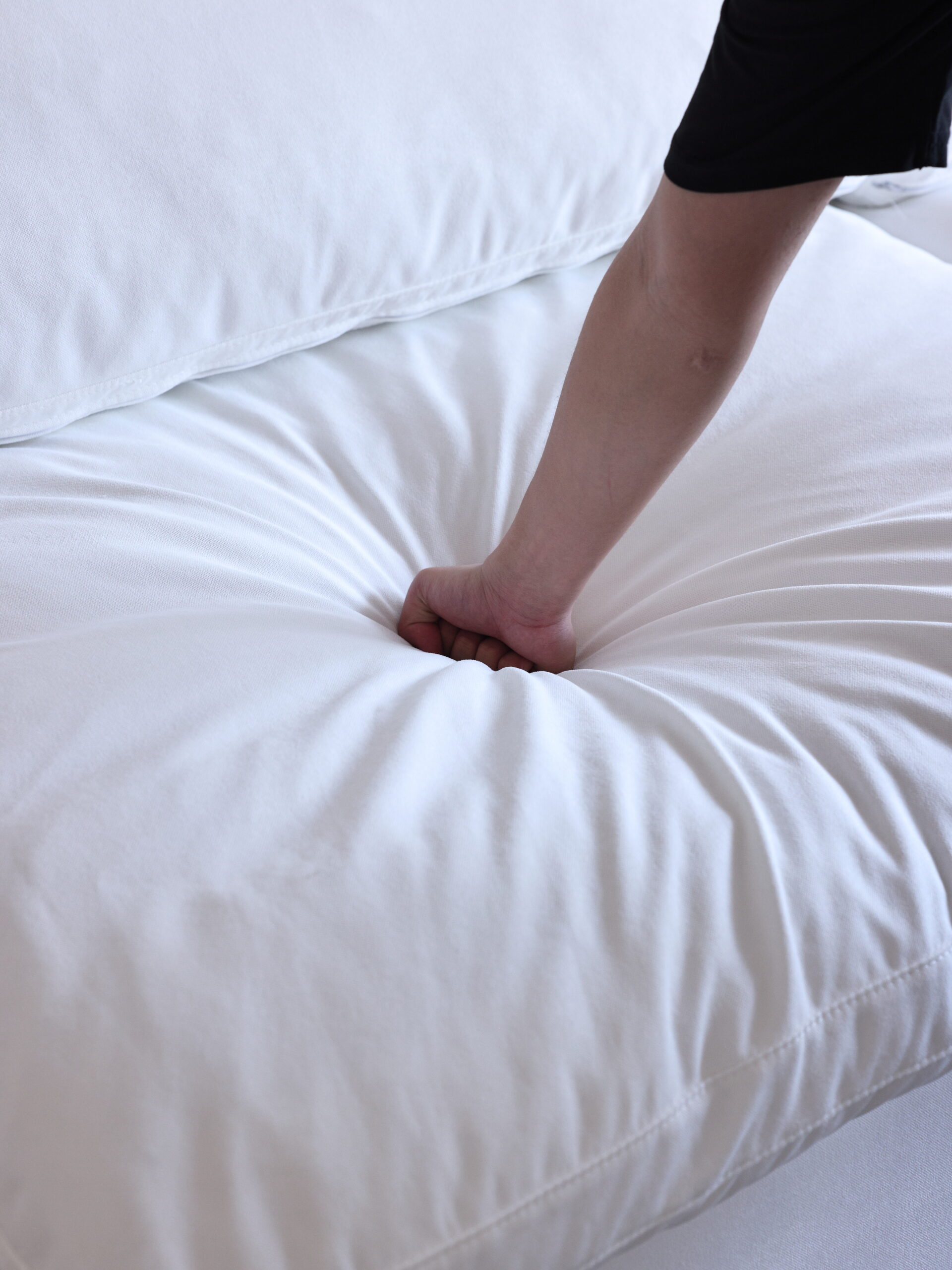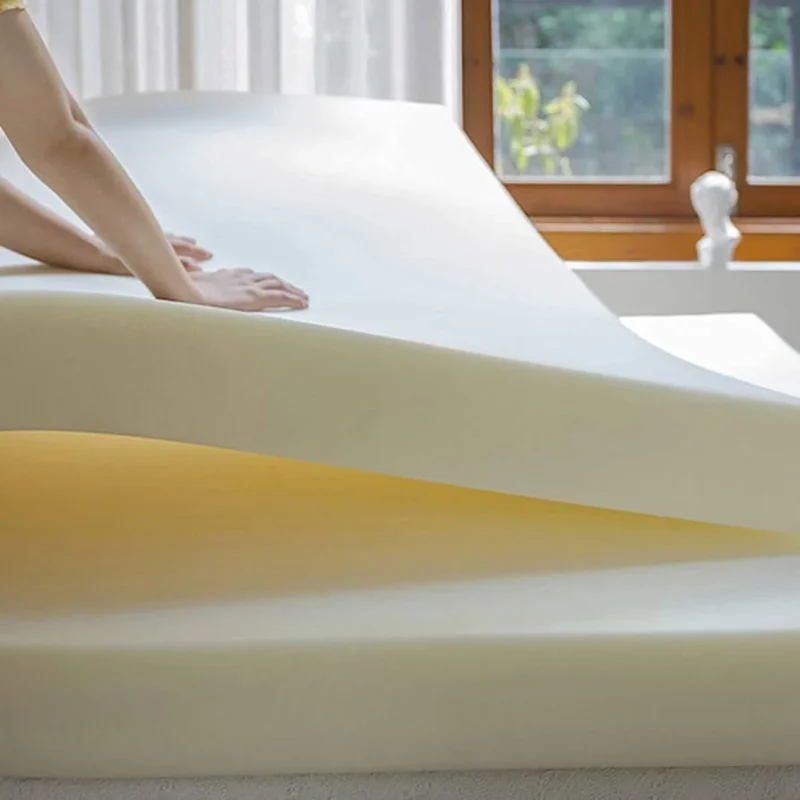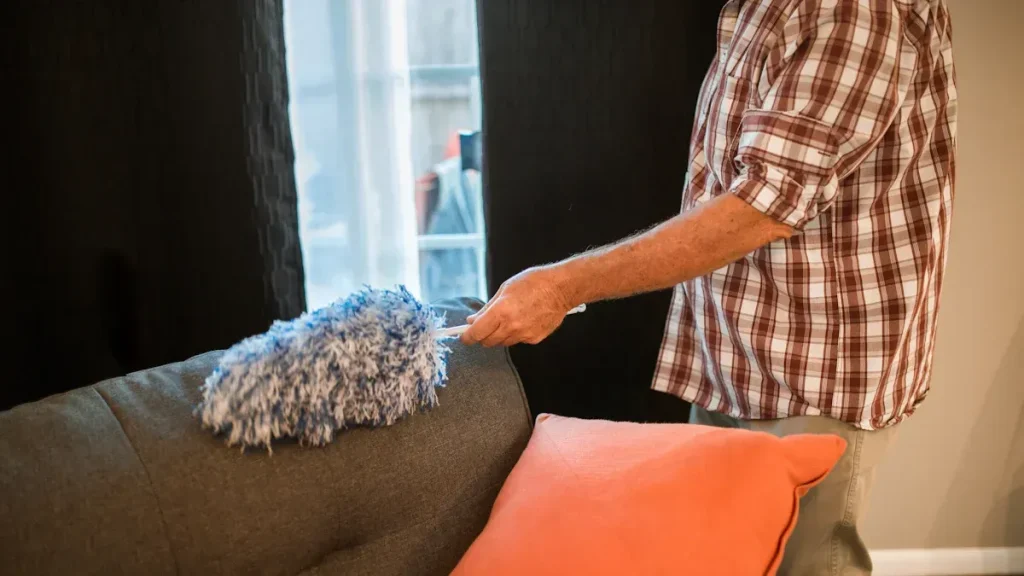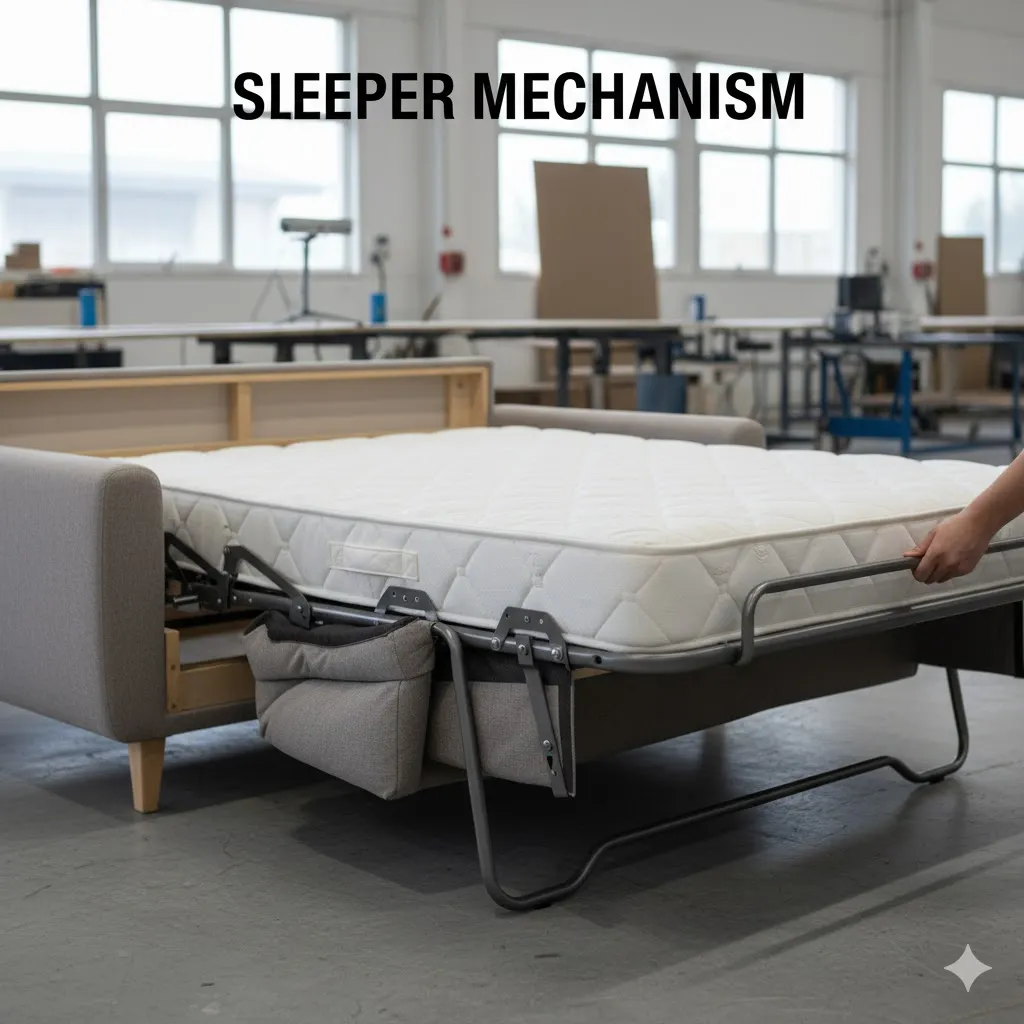Analyzing the Core Filling Types and Their Trade-Offs
The choice of filling material directly affects how often you have to maintain your sofa and how long it keeps its shape. Here is a look at the most common types and the trade-offs that come with each choice.
Softness vs. Flattening: Polyester Fiberfill
Polyester fiberfill is the most common and lowest-cost filling. It is made from synthetic fibers and offers an affordable, soft, and plush feel right away. It is also lightweight and easy to move or adjust.
The Durability Problem: The major drawback is flattening. Because polyester fiberfill is generally low-density (around 1.50 lb/ft³ ), it is prone to breaking down quickly under regular use.1 This means the cushions can start to look flat and lifeless within 1–3 years and require constant, active fluffing to restore their appearance and feel.1
Luxury vs. Maintenance: Down and Feather
For true luxury and a moldable, ultra-soft feel, down and feather fillings are the premium choice. Down is the soft under-layer of bird plumage, and it provides exceptional loft and comfort.
High Maintenance: Down and feather cushions are high-maintenance. To prevent them from looking flat and losing their supportive feel, they require regular fluffing—often daily or weekly.
Allergenic Risk: They also carry an allergenic risk for some people, as they are natural materials. This makes them unsuitable for homes where allergies are a concern.
The Modern Solution: Engineered Blends
Engineered blends combine the strength of foam with the softness of fiberfill or natural down, aiming to create the best filling for sofa back cushions that overcomes the flaws of single materials.
Atunus Home’s Quality Focus: Many companies, including Atunus Home, focus on using engineered blends for back cushions. Atunus Home uses foam components that are high-density (high PCF) for durability, but with a low ILD score for comfort. This blend prevents the cushions from suffering the rapid flattening often seen in cheap polyester fiberfill.6 The foam structure helps the cushion hold its shape for many years, while the fiber provides a soft, pleasing surface feel. This approach is key to providing a long-lasting cushion that resists compression without feeling too firm.







